A CNC lathe is a computer-controlled machine tool designed for precision machining of rotational parts through subtractive manufacturing processes, utilizing programmed instructions to automate cutting operations that traditionally required manual intervention on conventional engine lathes. These systems rotate the workpiece on a spindle while precisely controlling the movement of cutting tools along multiple axes to perform operations such as turning, facing, grooving, threading, and drilling with tolerances as tight as ±0.005mm (±0.0002 inches) in high-precision models. The machine’s fundamental architecture consists of a heavy-duty cast iron or mineral composite bed providing vibration-damped stability, with a headstock containing precision bearings that support the main spindle (typically offering 50-6,000 RPM speed ranges for various materials) and a tailstock for supporting long workpieces during machining. Modern CNC lathes incorporate programmable servo-driven tool turrets or gang tooling plates that automatically position cutting inserts – ranging from general-purpose carbide grades to specialized CBN (cubic boron nitride) or diamond-tipped tools for hard materials – with rapid tool change times under 0.5 seconds in production environments.
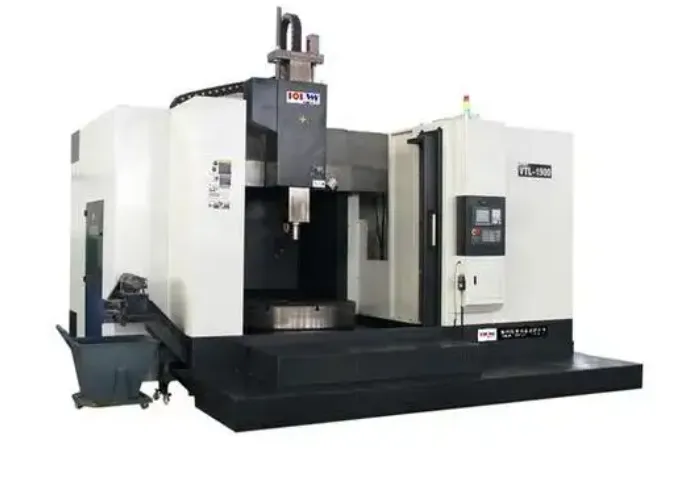 The control system represents the operational core of a CNC lathe, converting CAD/CAM-generated part programs into electromechanical actions through sophisticated motion control algorithms. Industrial CNC lathes employ controllers such as Fanuc, Siemens SINUMERIK, or Mitsubishi that process part programs containing hundreds of commands while simultaneously managing spindle synchronization, coolant flow, and auxiliary functions like bar feeders or part catchers. These systems utilize closed-loop feedback from rotary encoders (with resolutions exceeding 1 million counts per revolution) and linear scales to maintain positional accuracy during complex contouring operations, with advanced models incorporating artificial intelligence for adaptive control that adjusts cutting parameters in real-time based on tool wear or material inconsistencies. The human-machine interface typically features touchscreen panels displaying 3D toolpath simulations, cutting force monitoring graphs, and tool life management data, allowing operators to oversee multiple machining parameters including surface speed (maintained constant through spindle RPM adjustment as diameters change), feed rate (typically 0.05-0.5mm/revolution for finishing cuts), and depth of cut (ranging from 0.1mm for precision work to 5mm for roughing in steel).
The control system represents the operational core of a CNC lathe, converting CAD/CAM-generated part programs into electromechanical actions through sophisticated motion control algorithms. Industrial CNC lathes employ controllers such as Fanuc, Siemens SINUMERIK, or Mitsubishi that process part programs containing hundreds of commands while simultaneously managing spindle synchronization, coolant flow, and auxiliary functions like bar feeders or part catchers. These systems utilize closed-loop feedback from rotary encoders (with resolutions exceeding 1 million counts per revolution) and linear scales to maintain positional accuracy during complex contouring operations, with advanced models incorporating artificial intelligence for adaptive control that adjusts cutting parameters in real-time based on tool wear or material inconsistencies. The human-machine interface typically features touchscreen panels displaying 3D toolpath simulations, cutting force monitoring graphs, and tool life management data, allowing operators to oversee multiple machining parameters including surface speed (maintained constant through spindle RPM adjustment as diameters change), feed rate (typically 0.05-0.5mm/revolution for finishing cuts), and depth of cut (ranging from 0.1mm for precision work to 5mm for roughing in steel).
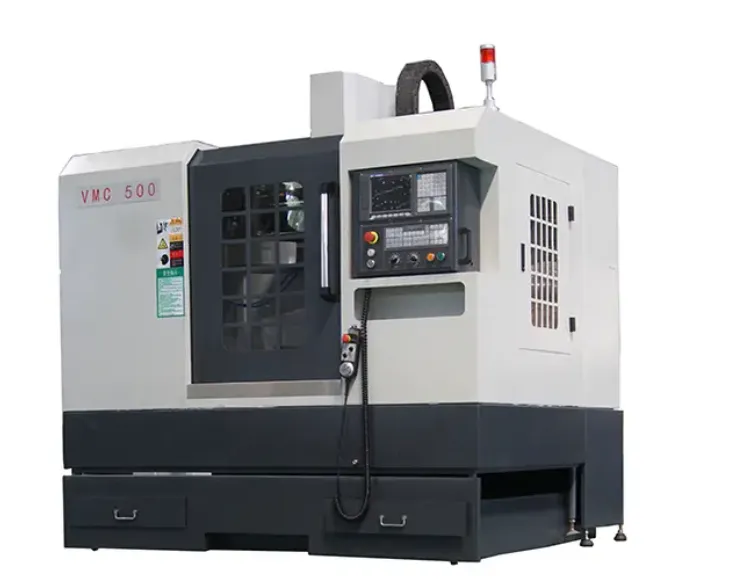
CNC lathes are manufactured in multiple configurations to address specific industrial requirements, with the two primary categories being vertical and horizontal orientations. Horizontal CNC lathes dominate general machining applications, with bed lengths accommodating workpieces from 50mm to 6 meters in length and spindle bores handling bar stock up to 150mm diameter in large-capacity models. Vertical CNC lathes (often called VTLs) specialize in heavy, short workpieces like large flanges or gears, utilizing gravity to secure parts that may weigh several tons. More specialized variants include Swiss-type lathes with sliding headstocks for precision machining of long, slender parts (diameters 1-32mm) and multi-axis turning centers that combine milling capability through live tooling and Y-axis movements – enabling complete machining of complex components in single setups. The machine’s construction incorporates hardened and ground guideways (box ways, linear rails, or hydrostatic designs) that withstand cutting forces exceeding 10kN while maintaining alignment accuracy within 0.01mm/meter, with thermal compensation systems counteracting expansion effects from machining heat or ambient temperature fluctuations.
Material capabilities span virtually all machinable metals, plastics, and composites, with each requiring tailored tooling and parameter strategies. Steel alloys are commonly machined at surface speeds of 100-300 meters/minute using coated carbide inserts, while aluminum alloys permit speeds up to 1,000 m/min with diamond-tipped tools when coolant prevents material adhesion. The machines’ rigidity allows effective machining of difficult materials like Inconel (requiring speeds of 20-50 m/min with specialized chipbreaker geometries) or hardened steels up to 65 HRC using CBN inserts. Plastic machining demands sharp, polished cutting edges and often incorporates air blast systems to prevent material melting, while composite materials require specialized tool coatings to minimize delamination. CNC lathes achieve surface finishes as fine as 0.2μm Ra in finishing operations when properly configured with precision ground inserts, optimized nose radii, and carefully tuned feed rates that avoid harmonic vibrations.
Industrial applications of CNC lathes span every manufacturing sector requiring high-precision rotational components. Automotive plants utilize multi-spindle lathes producing engine valves at rates exceeding 300 parts/hour while maintaining stem diameter tolerances of ±0.01mm. Aerospace manufacturers rely on large-capacity turning centers for landing gear components machined from titanium forgings, where concentricity requirements often fall below 0.025mm TIR (Total Indicator Reading). The medical industry employs Swiss-type lathes to manufacture bone screws and dental implants with thread profiles accurate to 5μm and surface finishes below 0.4μm Ra. Even consumer goods like plumbing fixtures and electronic connectors benefit from CNC turning processes that combine high volume production with tight geometrical tolerances on diameters, tapers, and threaded features. The machines’ versatility extends to prototyping applications, where quick-change tooling systems and conversational programming allow rapid iteration of design concepts in various materials.
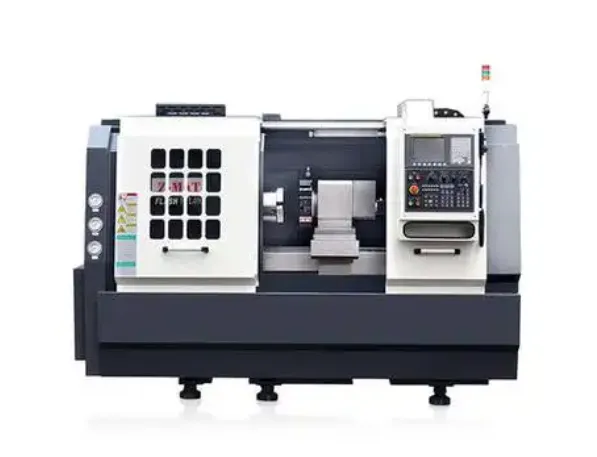
Technological advancements continue expanding CNC lathe capabilities through several key innovations. Multi-tasking machines now integrate milling, grinding, and gear hobbing operations alongside traditional turning functions, enabled by B-axis tooling heads that orient cutters at any angle relative to the workpiece. Intelligent tool monitoring systems analyze acoustic emissions and power consumption patterns to detect tool breakage or excessive wear before dimensional accuracy is compromised. Direct-drive spindles eliminate gearing components, providing 500Nm of torque at 1 RPM for heavy cutting while maintaining 0.1μm rotational accuracy at high speeds. Automated systems have advanced beyond simple bar feeders to include robotic part handling, in-process gaging for closed-loop size control, and even machine-tending collaborative robots (cobots) that safely interact with human operators. Environmental improvements include minimum quantity lubrication (MQL) systems that reduce coolant usage by 90% while maintaining tool life through precisely directed oil mist, and energy recovery systems that convert braking energy from axis deceleration back into usable power.
Operational parameters for CNC lathes require careful optimization based on material, tooling, and desired outcomes. Roughing operations in mild steel might employ depth of cut up to 5mm, feed rates of 0.3mm/revolution, and speeds of 200 m/min surface speed, while finishing the same material would use 0.2mm depth, 0.1mm/rev feed, and 300 m/min speed for optimal surface finish. Threading operations synchronize spindle rotation with tool movement at ratios precise enough to produce thread pitches accurate to 0.005mm over 100mm length. Modern controls store hundreds of tool/material parameter combinations and automatically adjust speeds/feeds when program-recognized material codes are specified. The machines’ programming flexibility allows complex geometries including non-round forms (via C-axis contouring), eccentric diameters (with live tool milling), and micro-machined features (using specially ground tools and high-spindle accuracy modes).
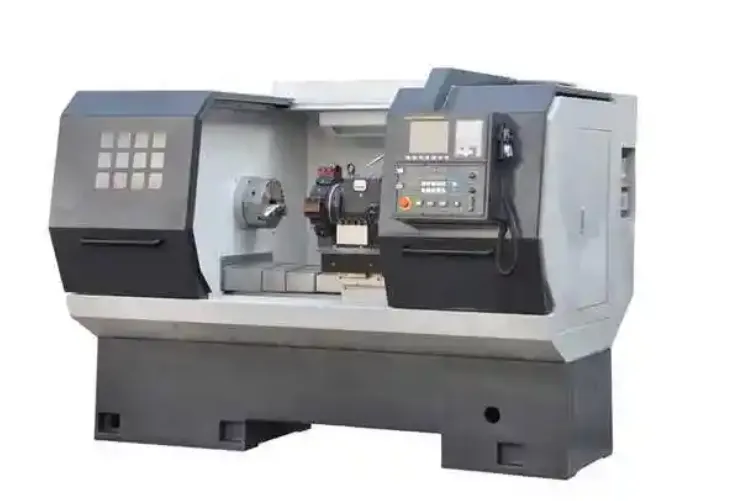
Maintenance requirements for CNC lathes focus on preserving their precision capabilities through systematic care protocols. Daily inspections include checking hydraulic pressures (typically 20-70 bar for chuck systems), lubricant levels in centralized oiling systems (often ISO VG32 or VG68 grade), and coolant concentration (maintained at 5-10% for water-soluble types). Monthly preventive maintenance involves verifying spindle runout (<0.005mm TIR for most applications), recalibrating tailstock alignment (within 0.01mm over 100mm travel), and cleaning way covers to prevent abrasive particle accumulation. Annual overhauls may include ball screw backlash compensation (adjusting to <0.01mm), replacement of spindle bearings (after 15,000-20,000 operating hours), and full geometric accuracy verification using laser interferometry to confirm axis straightness (<0.01mm/m), squareness (<0.02mm/m), and positioning repeatability (±0.002mm). Proper maintenance combined with controlled operating environments (temperature stability within ±1°C, humidity below 70% RH) enables high-end CNC lathes to maintain specified accuracies for decades of production service.
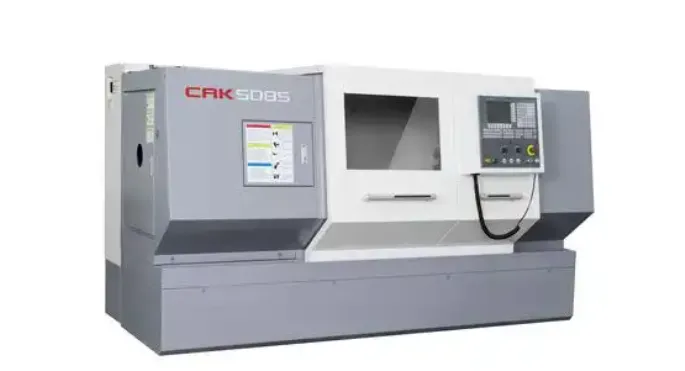
Future developments in CNC lathe technology focus on increasing autonomy, precision, and connectivity. Machine learning algorithms are being implemented to automatically optimize cutting parameters based on real-time performance data from tool sensors and workpiece measurements. Digital twin technology creates virtual machine models that simulate cutting processes with 95%+ accuracy before physical machining begins. Ultra-precision lathes are incorporating nanometer-resolution linear motors and laser feedback systems for optical component machining. Standardization efforts like MTConnect aim to create universal data protocols that allow seamless information exchange between CNC lathes and factory-wide monitoring systems. These advancements ensure CNC lathes will continue evolving as indispensable manufacturing solutions, capable of meeting increasingly stringent quality requirements while improving energy efficiency and reducing setup times across both high-volume production and customized low-volume applications.




